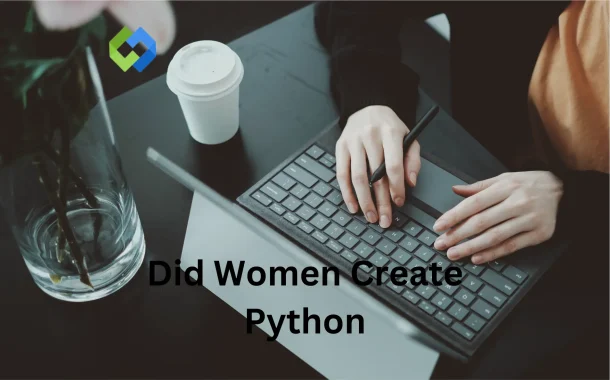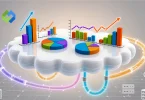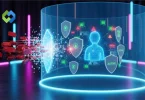Women have been coding since the early days of computers. Ada Lovelace wrote the first computer program, and Grace Hopper helped develop programming languages. Many women have worked on coding projects, but their contributions were often overlooked. Today, women continue to shape Python by developing tools, writing tutorials, and leading coding communities.
Table of Contents
Table of Contents
Who Really Created Python
Python was created by Guido van Rossum in the late 1980s. He was a Dutch programmer working at CWI (Centrum Wiskunde & Informatica) in the Netherlands. He wanted to design a programming language that was simple, readable, and easy to use. Many languages at the time were complex, so he decided to create something better.
Guido started working on Python as a hobby project during his Christmas break in 1989. He was inspired by the ABC programming language but wanted to improve it. His goal was to make a language that was flexible and powerful while still being beginner-friendly. After a lot of work, he officially released Python in 1991.
Since then, Python has grown into one of the most popular programming languages in the world. Many developers, including women, have contributed to its success. While Guido van Rossum is the original creator, the Python community has helped shape and improve it over the years.
Guido van Rossum and the Making of Python
Guido van Rossum is the creator of Python, a programming language known for its simplicity and ease of use. In the late 1980s, he was working at CWI (Centrum Wiskunde & Informatica) in the Netherlands. At that time, many programming languages were complex and difficult to learn. Guido wanted to create a language that was both powerful and beginner-friendly, making coding more accessible to a wider audience.
During his Christmas break in 1989, Guido began working on Python as a personal project. He was inspired by the ABC programming language, which was designed for teaching but had limitations. He improved upon it by adding more flexibility and features. His main focus was to create a language with clean and readable syntax. After months of development, he officially released Python 1.0 in 1991.
Python quickly gained popularity because of its simplicity and versatility. It became widely used in web development, data science, and artificial intelligence. Guido continued leading Python’s development for many years, making key improvements. Even after stepping down as the language’s leader, his influence remains strong, and Python continues to grow with contributions from developers worldwide.
Women in Early Programming
The First Female Programmer
In the 19th century, Ada Lovelace became the first person to write an algorithm for a mechanical computer. She worked with Charles Babbage on his Analytical Engine and realized that machines could do more than just calculations. Her work laid the foundation for modern programming.
Women in Computing During World War II
During World War II, women played a crucial role in computing. They worked as human computers, solving complex mathematical problems for military operations. The ENIAC programmers, a group of six women, programmed one of the first electronic computers. However, their contributions were often overlooked and uncredited.
Grace Hopper and the First Compiler
Grace Hopper was a pioneer in programming during the 20th century. She developed the first compiler, which made programming easier by converting human-readable code into machine language. Her work led to the creation of modern programming languages like COBOL.
The Struggles and Recognition of Women in Tech
Despite their contributions, women faced barriers in gaining leadership roles in technology. Many of their achievements were ignored for years. Today, efforts are being made to recognize their impact and inspire more women to pursue careers in programming. Their work has helped shape the computing world, including programming languages like Python.
How Women Shaped Python’s Growth
Women have played a significant role in Python’s growth by contributing to its development, documentation, and teaching. Many female developers have worked on improving Python’s libraries, making it more accessible for various fields like data science, web development, and artificial intelligence. Their efforts have helped expand Python’s capabilities and usability.
Women Leading Python Organizations
Several women have led initiatives to promote Python and make it more inclusive. Groups like PyLadies encourage more women to learn and contribute to Python. Female developers have also played key roles in organizations like the Python Software Foundation (PSF), helping shape policies and drive Python’s global adoption.
Innovations and Teaching by Women in Python
Many women have created educational resources, tutorials, and online courses to teach Python. Their work has helped beginners and professionals alike. By making Python more understandable and accessible, they have ensured its continued growth and widespread use.
The Ongoing Impact of Women in Python
Women continue to shape Python by leading projects, mentoring new programmers, and advocating for diversity in tech. Their contributions have made Python one of the most welcoming and inclusive programming languages. As more women enter the field, Python will keep evolving with fresh ideas and innovations.
Notable Women in the Python Community
Lorena Barba
Lorena Barba is a professor and researcher who has significantly contributed to Python’s use in education and scientific computing. She has developed open-source Python tools for computational science and has actively promoted Python in academia. Her work has helped students and researchers worldwide learn and use Python effectively.
Jessica McKellar
Jessica McKellar is a well-known Python developer, open-source contributor, and former director of the Python Software Foundation (PSF). She has worked on making Python more accessible to beginners and has contributed to the language’s development. She has also led initiatives to encourage diversity in the Python community.
Naomi Ceder
Naomi Ceder is a longtime Python developer and educator who has worked to make the Python community more inclusive. As a former PSF chair, she has led efforts to support underrepresented groups in programming. Her contributions to Python education and community building have helped Python grow worldwide.
Katharine Jarmul
Katharine Jarmul is a Python expert specializing in data science and machine learning security. She has written books and taught courses on Python, helping many professionals learn how to use it for data analysis and ethical AI. Her work has influenced Python’s role in cybersecurity and ethical computing.
The Continued Impact of Women in Python
These women, along with many others, have helped Python grow through their contributions to development, education, and advocacy. Their work has shaped the Python community, making it more inclusive and innovative. As Python continues to evolve, more women are stepping up to lead, create, and inspire the next generation of programmers.
Conclusion
Women did not create Python, but they have played a big role in its growth. Guido van Rossum developed Python in 1989, but many women have contributed to its success. They have worked on Python’s development, taught it to others, and built communities to support new programmers.
Women in programming have shaped the tech world for decades. From early computing pioneers to modern Python developers, their impact is strong. Today, they continue to lead projects, promote diversity, and improve Python. Their efforts make Python more accessible and powerful for everyone.














